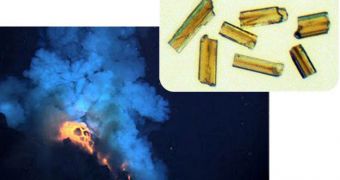According to geological records and other data, our planet heated considerably about 55 million years ago, when temperatures skyrocketed by about 5 degrees Celsius. If this were to happen today, all ice caps would melt, and sea levels would rise to swallow major cities such as Tokyo, New York, Rotterdam and so on. Experts say that this time of global warming lasted for no less then 170,000 years, but thus far, they had no idea as to what may have caused it. Now, a team proposes a new solution to clear up this mystery, ScienceNow reports.
The event took place just some 10 million years ago after the K-T (Cretaceous-Paleogene) extinction event, which saw all dinosaurs, as well as a host of other species, being wiped off the face of the planet. When the surface and the atmosphere began to warm up, the conditions prompted the emergence of a new era of plant diversity. At the same time, mammals began developing, until they eventually came to rule the world. According to the investigation, it would appear that the culprits behind that global warming event were massive underwater volcanoes.
Scientists say that these very large formations began spewing out as much as trillions of tons of the dangerous greenhouse gas methane, which is several times more powerful than carbon dioxide. The adding of such massive amount of gases into the atmosphere may be what caused the Paleocene-Eocene Thermal Maximum (PETM), the scientific name for the peculiar event. In studies conducted in the Norwegian Sea in 2005, researchers found traces of more than 700 craters, each of them several kilometers in diameter. Put together, they form a volcanic complex dwarfing any other in history.
Coincidentally or not, the craters are located squarely on top of areas that contain impressive reservoirs of methane. The work was conducted by investigators based at the University of Oslo, who were led by expert geologist Henrik Svensen. Details of the research were published yesterday, April 23, in the latest issue of the esteemed scientific Journal of the Geological Society. In the paper accompanying the findings, Svensen and colleagues propose that, as the volcanic region was being churned by magma movements underneath, the methane deposits were heated up, and the dangerous gas was released in massive amounts.

 14 DAY TRIAL //
14 DAY TRIAL //